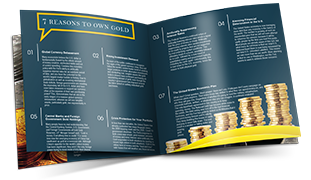
Gold prices hitting $5,000 “won’t surprise” Agnico Eagle. The Canadian gold mining company recently unveiled its shiny forecast, joining a rapidly expanding group of analysts predicting a 43% leap from recent highs.
Sean Boyd, the group’s chairman, thinks the evolving critical minerals landscape will act as a boon to prices as governments double down on ownership and investment.
The mining veteran also cites central bank demand and repatriation as key drivers of the ongoing rally.
Gold Mining Revs Up
While most analysts focus on the macroeconomic variables boosting gold, Agnico Eagle’s industry expertise offers insights into the influence of the mining sector.
Although the gold supply has been able to maintain parity with demand over the past few years, total gold consumption is threatening to pull ahead.
This impetus, combined with rising geopolitical tensions, has led countries and extraction companies to concentrate on increasing production.
“This is about presence. Presence is sovereignty,” explains Boyd.
The Trump administration’s disruptive trade policies and dollar weaponization have disrupted international trade, especially in critical minerals.
Countries are increasingly hoarding domestic supplies, impacting the global gold trade. For example, Russia’s gold holdings have skyrocketed by 72% in value over the past three years.
The United States, the holder of the largest gold reserves, has also demonstrated a renewed interest in gold through the following:
- Fort Knox Audit: Elon Musk and Trump have repeatedly announced plans to audit Fort Knox to get an accurate account of the country’s gold holdings–a procedure which hasn’t formally happened for decades.
- Regulation Rollback: The admin passed an Executive Order promoting the extraction of critical minerals, including gold, by rolling back environmental regulations, expediting permits, and lowering the barriers to federal land.
- Foreign Mineral Rights: Trump signed a deal with Ukraine to secure the US a share of the mineral-rich country’s production. Furthermore, Boyd believes Trump’s chatter about acquiring Canada and Greenland is part of a strategic negotiation for obtaining some of the North’s wealth of gold.
Steady Official Gold Demand
Central bank demand has been a key metric for investors when judging the economic outlook among top players. With gold consumption remaining elevated (even hitting a nine-year record in Q1 2025), the fiscal forecast is gloomy.
This strategic shift into physical gold signals a deep, systemic distrust of the global financial system. For the past three years, official demand has remained above 1,000 tons a year, and many analysts believe future purchases will stay high.
Repatriation Rush
In addition to sustained demand, central banks are showing renewed eagerness to repatriate their gold reserves. Historically, many countries have strategically positioned their reserves in foreign nations, like the US, to protect their wealth.
However, the rise in isolationism and the cracks in global trade have sparked a repatriation effort. For example, Germany is mulling over removing all or some of its holdings from New York. This global push to increase strategic gold reserves and onshore physical holdings indicates that uncertainty is increasing.
“That demonstrates that the owners of gold feel uncertainty is coming and they don’t want it somewhere else—they want it close to home,” explains Boyd.
The $5,000 Call
When asked about gold’s future performance, Agnico Eagle’s chairman predicted higher prices on the horizon.
“It won’t surprise us if it’s $5,000. When you have big players wanting gold—the central banks wanting physical gold, wanting it close to home—it tells you there’s going to be continued uncertainty in the world.”
This bullish benchmark finds good company among a rapidly growing wave of voices backing the $5,000 gold thesis.


